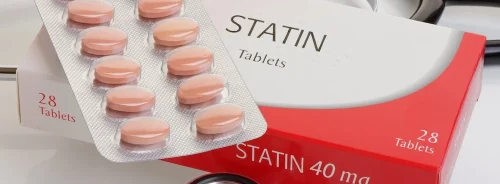Stroke is a leading cause of long-term disability worldwide, often leaving survivors with physical, cognitive, and emotional challenges. Traditional treatments aim to restore blood flow and reduce brain damage, but they do not directly repair the damage caused by a stroke. This is where stem cell therapy, particularly Stromal Vascular Fraction (SVF), offers new possibilities for stroke recovery. The application of autologous (a patient's own) stem cells has been studied clinically for well over a decade now, and they represent a promising frontier in the quest to enhance brain repair and functional recovery.

Understanding Stromal Vascular Fraction (SVF)
Stromal Vascular Fraction (SVF) is an emerging approach that utilises a mixture of cells derived from adipose (fat) tissue. SVF is a rich source of various cell types, including mesenchymal stem cells (MSCs), hematopoietic stem cells (HSCs), endothelial precursor cells (pericytes), and immune cells. These cells work together to promote tissue repair, angiogenesis (formation of new blood vessels), and immunomodulation (the adjustment of immune response). Research indicates that SVF may help improve outcomes in stroke recovery by supporting the body's natural healing processes.
How Do Stem Cells and SVF Work?
SVF leverages the regenerative properties of the stem cells contained within adipose (fat) tissue. Key cell types involved in this process include:
- Mesenchymal Stem Cells (MSCs): MSCs are known for their ability to differentiate into various cell types, such as bone, cartilage, and fat cells. In the context of stroke recovery, MSCs support tissue repair and reduce inflammation by releasing growth factors and cytokines. They may also have the ability to become microglial cells, which play a critical supporting role in neurologic health.
- Endothelial Precursor Cells, Pericytes: These cells help form new blood vessels, improving blood flow to damaged brain tissue and facilitating healing.
- Immune Cells: SVF contains immune cells that can modulate the body's immune response, reducing inflammation and promoting a more conducive environment for tissue repair.
Together, these cells create a supportive milieu for brain recovery by secreting bioactive molecules, such as growth factors, cytokines, and microRNAs, which can help restore damaged brain tissues and improve neurological function.
Promising Research and Clinical Studies
Preclinical and early-phase clinical studies have shown encouraging results for the use of SVF therapy in stroke recovery. Here’s an overview of the key findings:
Improvements in Stroke Patients
Clinical studies suggest that SVF therapy can potentially improve symptoms, mobility, and quality of life in stroke patients. For example, a study by Michálek et al. (2019) found that stroke patients who received SVF treatment experienced notable improvements in their neurological function, motor skills, and daily activities. These outcomes are believed to be due to SVF's ability to promote neurogenesis (growth of new neurons), synaptic plasticity (re-wiring of brain circuits), and neuroprotection (preventing further damage to brain cells).
Support for Tissue Repair and Angiogenesis
SVF also shows promise in supporting tissue repair and promoting angiogenesis. According to Guo et al. (2016), the paracrine effects (cell signalling to nearby cells) of SVF cells can stimulate the growth of new blood vessels and support the repair of damaged tissues. This is particularly important in stroke recovery, where restoring blood flow to damaged areas can significantly affect outcomes.
Potential Applications in Other Neurological Conditions
Beyond stroke, SVF is being explored for other neurological conditions. For example, preliminary studies indicate that SVF may benefit multiple sclerosis patients by modulating the immune system and reducing neuroinflammation (Riordan et al. 2009). These findings suggest a broader potential for SVF therapy in treating a range of neurological disorders.
Preclinical Studies and Opportunity Windows
Preclinical studies have consistently reported favourable outcomes in stroke recovery across various doses and treatment windows (Eckert et al. 2013). These studies provide valuable insights into optimising the timing and dosage of SVF to maximise its therapeutic potential. Clinical observations suggest the best time to administer SVF is in the acute phase (nearest the time of original injury), however, positive outcomes have been observed months and years after the injury occurred.
Challenges and Future Directions
While SVF therapy holds great promise, several challenges and areas for further research need to be addressed before it can become a standard clinical practice for stroke recovery.
Need for More Trials
While a focus has been placed on the use of stem cells and SVF in the field of orthopaedics and sports medicine, more attention needs to be given to the use of these cells in neurodegenerative conditions like stroke, traumatic brain injury, and cerebral palsy. While the safety profile of autologous SVF has been well established (Berman et al. 2017), more focus needs to be placed on optimal delivery mechanisms, dosing, and timing of SVF administration.
Understanding the Role of microRNAs
Recent research has highlighted the potential role of microRNAs in regulating the function of SVF cells. MicroRNAs are small, non-coding RNA molecules that can influence gene expression and cellular behaviour. The precise mechanisms by which microRNAs affect SVF's therapeutic effects are still being investigated (Agaverdiev et al. 2022). Understanding this regulatory network could lead to more targeted and effective stem cell-based therapies.
Regulatory and Ethical Considerations
The regulatory landscape surrounding stem cells has long been confusing, starting with embryonic stem cells to where we are today, working with adult stem cells. A recent federal court ruling in August of 2022 paved the way for physicians to use autologous adipose-derived SVF for their patients using the surgical techniques developed by theCell Surgical Network. This is mainly due to the fact that the cells used in these procedures retain all of their natural biological characteristics and are unchanged, which is also one of the primary safety features of using your own personal stem cells.
The Future of SVF in Stroke Recovery
Despite the challenges, the future of SVF and personal stem cells in stroke recovery looks promising. Ongoing research aims to refine protocols, identify the most effective times to deploy cells and dosages and develop strategies for optimising treatment delivery. Here are some key areas of focus for future studies:
- Personalised Treatment Approaches: By understanding the individual characteristics of stroke patients, such as the type and location of the stroke and the patient's overall health, researchers can develop personalised SVF therapy protocols that maximise benefits.
- Combination Therapies: Exploring the potential of combining SVF therapy with other treatments, such as rehabilitation, neurostimulation, or pharmacological interventions, may enhance overall outcomes and accelerate recovery.
- Long-term Monitoring: Long-term studies are needed to assess the durability of SVF's therapeutic effects and monitor any potential side effects or complications over time.
Conclusion
The application and administration of personal stem cells, particularly Stromal Vascular Fraction (SVF), offers a new avenue for enhancing stroke recovery by promoting tissue repair, angiogenesis, and immunomodulation. While early research and clinical studies are encouraging, more rigorous trials and further investigation are needed to understand its full potential and safety profile. As science continues to uncover the complexities of brain repair and regeneration, SVF therapy may become an integral part of stroke rehabilitation, offering hope for millions of stroke survivors worldwide.
For now, the promise of SVF therapy represents a hopeful frontier in stroke recovery. By supporting the body's natural healing processes and fostering a more conducive environment for brain repair, SVF therapy could one day transform how we approach neurological rehabilitation and offer new possibilities for those affected by stroke.
This article is part of the HealthManagement.org Point-of-View Programme.





